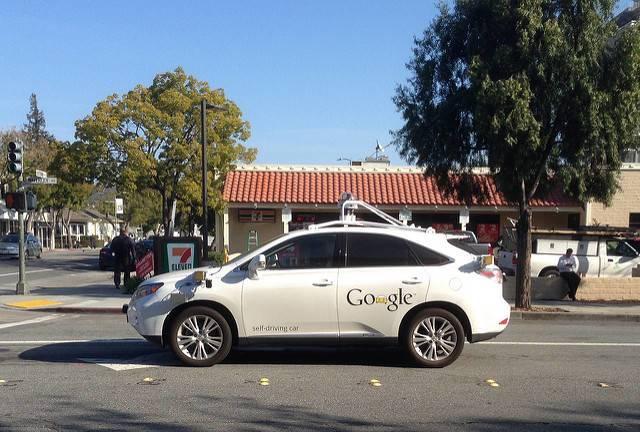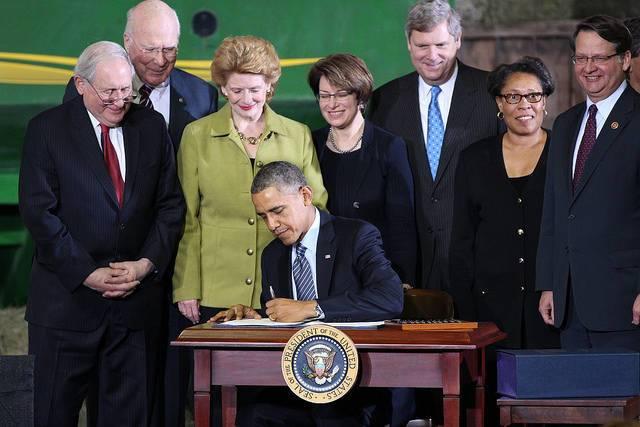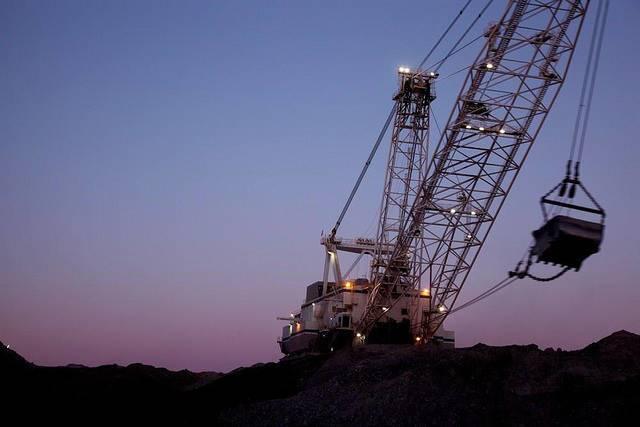Bay Area Suburb Mandates Solar Panels on New Homes


.
Fremont, a suburb of San Francisco, is making a strong move to become the regional clean energy leader by mandating solar panels on all new home and business developments, as part of its goal to be a net-zero-energy city by 2020 – an ambitious goal indeed. The downside of the move is that it has the potential to exacerbate the existing housing crisis in the region
Existing homes will be exempt, but new developments will have to take the costs of installing solar panels – the number of which will be determined by square footage – into account. Still, it’s a big move for a city that has been, steadily, building its green credibility.
In fact, Fremont has already been doing quite a bit to green its energy mix. According to a city press release, “home energy consumption in Fremont has decreased nearly 15 percent over the past four years...these energy reductions can be attributed to significant improvements in energy efficiency as well as the installation of over 2,800 rooftop solar electric systems to date.” The new move would add to this and make the city even more clean energy friendly.
Fremont also wants to expand the number of electric vehicle charging stations in the city. Each new single family home will have to one EV-ready parking spot, and multifamily and non-residential projects will need to include at have at least 10 percent of parking lots EV-ready.
This is no accident, of course. Fremont also happens to be home of a large Tesla factory which is, as we speak, churning out far fewer electric vehicles than the market demands. Many Tesla workers live in Fremont, one of the reasons that the city already has a high EV ownership rate with the city estimated 5,000 drivers to date.
“Right now, we have over 5,000 EV drivers in Fremont, and we’d really like to see that number continue to grow and multiply over the next handful of years,” said Rachel DiFranco, Fremont’s sustainability coordinator to the East Bay Times.
The city also has a new BART station at Warm Springs – near the Tesla plant, with solar panels charging 42 EV parking spots. The area around the station is mostly undeveloped but the city plans to create a walkable, transit-oriented community there. The new regulations means that all of this development will have to include solar.
For now, the impact on housing prices should be minimal. In the short term, developers will be able to take advantage of Congress’s decision to extend the renewable investment tax credit. In the medium to long term, the cost may not be that big. Solar prices are dropping fast. In fact, it may be a smart investment to put solar now – and pay lower energy costs in the future.
Cities across the country will be watching Fremont closely. If it is able to bring on new developments without raising costs, and increase solar adoption, expect other cities to follow its example.
Photo Credit: Oleg Alexandrov via Wikimedia Commons
How The Electric Vehicle Economy Will Win On Price


Too many U.S. states, and their electric utilities, think electric vehicles are linked to urgent action on climate change. They see EVs as an environmental solution to a problem that has yet to gain political consensus, at least in the U.S.
But they're wrong: Electric vehicles, like the rest of the products emerging from what I and other economists call the green economic revolution, will win mass-market adoption because they cost less. And that day is fast arriving.
Electric vehicles anchor a critical mass of technologies poised to slash transportation costs through a new business model often called mobility as a service, or MaaS.
Some posit that MaaS will win price-competitive advantage by:
- Displacing fossil fuels with lower-cost renewable electricity
- Reducing vehicle maintenance costs by displacing mechanical systems with electronics
- Reducing labor with autonomous vehicles
- Lowering consumer costs with digitally-purchased, incremental mobility services compared to vehicle ownership
Recent estimates project that MaaS will be four to 10 times cheaper than owning a car in less than 15 years. The average American household is projected to save $5,600 annually. Such a massive cut could potentially drive our national economy to a 3 percent annual growth rate.
Vehicles designed as consumer devices
Think horse and buggy versus a gasoline-powered car: This is the scale of change that defines MaaS.
MaaS innovators are not focused on improving existing car design. Instead they seek to design vehicles as consumer electronics. These five technologies will drive the redesign of vehicles into consumer electronic devices:
- 5G: 5G is the next wave of mobile connectivity. It has gigabyte speeds and bandwidth compared to today’s 4G speeds. As early as 2018, MaaS will use 5G to create real-time convenience and efficiency between smart, autonomous vehicles and consumers.
- Artificial Intelligence (AI): AI is the autonomous electric vehicle’s operating system and “steering wheel.” It will autonomously steer electric vehicles from customer to customer and curb to curb. It will optimize for safety, on-time performance and lowest cost.
- Digital commerce: Car loans will be displaced by cheaper, easier and more convenient digital payment for incremental mobility service. Think of Uber-like services supplying whatever you need (drones, SUVs, pick-up trucks or non-emergency medical vehicles). through a digital payment system accessed through a smart phone or wearable device.
- Renewable electricity: Renewable electricity will fuel vehicles designed as consumer devices. Electricity is the preferred energy for consumer electronic, and renewables will eventually take over as they become cheaper than fossil fuels or fossil-derived electricity.
- Batteries: Batteries are on a downward cost curve driven by innovation and manufacturing economies of scale. Battery costs have already fallen by 75 percent and are projected to win another 75 percent cost decline by 2030. Battery range is being extended even as costs decline. And this month a company claimed its new-generation battery technology put up a 300-mile driving range with five-minute recharging times.
California and the EV economy
California’s Tesla is an obvious poster child of vehicles designed as consumer electronics. But Tesla is only one of many auto manufacturers to join what is now called Silicon Valley auto manufacturer row. BMW, Ford, General Motors, Honda, Toyota and Volkswagen are just some of the auto manufacturers that have recently opened technology centers in Silicon Valley to design vehicles as consumer electronic devices.
And California startup companies are already implementing MaaS. Firms like Veyo and Uber are pioneering the use of big data and predictive software to deliver lower-cost, real-time, door-to-door mobility solutions.
California is also implementing a renewable electricity system that will slash transportation fuel costs. Today, up to 40 percent of California’s grid supply comes from renewable energy. Most California solar plants can recapture original investment in about five or six years. The cost to produce electricity after system payback is almost zero.
Thanks to that zero incremental price, combined with a growing supply of renewable energy, California’s grid operator now charges negative prices (effectively paying generators not to operate) to curtail production.
The state plans to use this glut of lower- (zero-) cost renewable electricity to fuel 1.5 million electric vehicles by 2030. California is building out a state-wide network of 10,000 recharging stations that will make cheap renewable energy available to electric vehicles.
California also has almost 5 million homes powered with solar energy. And thousands of these homeowners are now using their system’s electricity to recharge their electric cars for free.
These California examples portend the fossil fuel industry’s competitive question: How can you compete with “free?”
The answer to that question is why the CEO of Total, a global oil company, predicts electric vehicles winning 30 to 40 percent marketshare by 2030.
What MaaS means to your state’s economy
Imagine your state without gasoline stations. What business would move there?
MaaS raises a similar state (and national) issue. Not having lower-cost renewable electricity, and public policy supportive of autonomous driving, could be the 21st-century equivalent of not having gasoline pumps during the 20th century. Yet, at such a time of disruptive technology change, too much of our public policy has a rearview mirror focus on preserving 20th century technologies, business models and jobs.
Public policies focused in the rearview mirror will harm our economic future. While tax policy influences economic growth, it is innovation and productivity that ultimately bear economic fruit. Public policy that retards or blocks innovation and productivity also retards and blocks our country’s ability to achieve a 3 percent annual economic growth. The 21st century's public policy imperative, if we are to have an economy strong enough to fund our national interests, is to support MaaS.
The second article in this two-part series explores public policy steps our nation, states and communities must address to remain competitive in an electric vehicle economy enabled through a MaaS business model.
Image credit: Flickr/Ed and Eddie
JPMorgan Chase Doubles Down on Detroit Investment


If you have a lot of money, you can do a lot of good with it. There are plenty of areas where needs are genuine and deep, and some extra cash can make a big difference. If you are in a position to provide money to help meet some of those needs, and choose to do so, people will think better of you. Of course, there is still the question of, where did all that money come from?
Which bring us to JPMorgan Chase’s recent decision to increase its investment in Detroit’s revitalization by $50 million to $150 million. This is a company with a lot of money. It is also a company that was in the thick of the mischief that led to the 2008 financial crash, a company that has been called “worse than Enron,” a company that paid $20 billion in fines in 2013 alone, and was hit by a deferred prosecution agreement from the Department of Justice. In other words, it’s fair to say that JPM has some issues with its reputation.
It’s would be all too easy to conclude that this move is simply a case of whitewashing, or as some might say, greenwashing. But to do so would not only be oversimplifying, but it would also miss an important point about sustainability. That point being that it is infinitely easier to sell sustainability when it’s financially attractive, than to sell it on the grounds that it’s “the right thing to do.” It’s a simple fact of the game that while many people will choose the common good over self-interest a fair amount of the time, an equal, or perhaps greater number will choose self-interest first. Another way to frame the question is, do big companies now put more emphasis on “doing the right thing,” because they have undergone a conversion and are now true believers? Or are they doing these things because they recognize that doing so has become a necessity for any number of reasons? Perhaps that answer is not as important as their actions.
Getting back to Detroit, it’s worth noting that will JPMorgan Chase had its roots in the National Bank of Detroit, which was formed in 1933, in the aftermath of the Great Depression, jointly financed by General Motors and the Reconstruction Finance Corporation, the Federal agency put in place to stabilize the banking industry.
The second point is that Detroit, after declaring bankruptcy in 2013, with a 22 percent unemployment rate, is getting back on its feet, due to a combination of tops-down and bottoms-up efforts.
The leadership of Mayor Mike Duggan, who Fortune calls a “technocrat,” can’t be overlooked either. Duggan, who once said, “We don’t want charity. We want a plan, where you can come in and make money, and other people can notice and follow suit,” really set the tone for what people like JPMorgan Chase CEO Jaime Dimon and developer Dan Gilbert have done there, which was to invest large sums in the city.
Both will likely do well. In their press release, JP Morgan Chase said that “improving economic conditions in the city,” was an enabler for the increased level of investment. The funds will go towards grants and loans for: community development ($50 million), small business development ($9.5 million), workforce readiness ($10 million), neighborhood revitalization ($25.8 million), and economic growth ($6.9 million).
As the city’s economy grows stronger, these investments will grow in value. Beyond the money, a great deal of thought and planning have gone into this initiative.
Says Mayor Duggan, “JPMorgan Chase has been a true partner in our work to restore economic growth and opportunity in Detroit. The firm's investments have enabled thousands of Detroiters to receive training, created new opportunities for entrepreneurs and revitalized neighborhoods. There is more work to do, and I hope our continued partnership will build a thriving economy for all Detroiters."
This is broad-based, as opposed to trickle-down economics. Funds and opportunities are directed across the economic spectrum and not simply to those at the top. The effort is largely local in nature, with big employers like Quicken Loans being attracted back into the city where 3,100 employees now live. Microsoft has also just moved a Tech Center into 40,000 square feet downtown. According to JPMorgan Chase, their investments to date have created 1,500 jobs, 1,500 housing units, trained 15,000 people, and provided assistance to 1,800 small businesses. The engagement of more than 20 local organizations and over 100 employers in planning and implementing this effort contributes to its likelihood of success.
Whether JPMorgan Chase is trying to atone for past sins, or simply trying to make more money is not for us to say. The fact is, quite a bit of good appears to be coming out of this effort.
Image credit: RP Siegel
Can Obama Become a Force for Sustainable Agriculture?


Former President Barack Obama made headlines for seemingly coming out of nowhere and into Milan for this week’s Seeds and Chips Conference, an annual event that focuses on innovations in order to improve and modernize the global food supply. Speaking with his former White House nutrition advisor, Sam Kass, the former president focused on the role agriculture has in contributing to climate change.
The discussion was notable, as policy decisions over agriculture are usually swept under the rug. After all, in many countries across the world, from Japan to India to France, as well as here in the U.S., farming has long been central to a nation’s psyche – and therefore, policy makers generally go out of their way to appease farmers. Of course, Obama no longer has to balance different constituencies' demands. During his brief speech and talk with Kass on Wednesday, Obama noted that agriculture is the second-largest contributor to greenhouse gas emissions after energy.
Of course, that statistic varies depending on what data are consulted: many scientists insist the global meat industry is a larger contributor to greenhouse gas emissions than the world’s entire transport sector; the EPA ranks agriculture as fourth behind electricity, transport and industry; and other experts have estimated that worldwide, farming contributes one-third of all emissions. But no matter how those numbers are crunched, the fact is that farming’s impact on the global environment cannot be denied.
Much of the argument lies in basic physics. When you transform woodsy and rich in biodiversity into farms that generally grows one crop (i.e. monoculture), you are preventing more carbon dioxide from being sequestered and eventually released as oxygen. And as you plow more land, while transforming carbon sinks such as peatlands into acreage devoted to commodities including palm oil, the effects are obvious -- more global warming pollution. Meanwhile, the world is trapped into a vicious circle in which the population is surging, the climate is changing, more food is needed, yet it has become more difficult for farmers to grow food (and citizens to buy it) – witness the declining yields and stubbornly high prices of recent years.
Whether Obama is the person to lead this discussion of sustainable agriculture is an open question. His wife is known more for talking about healthful food choices and agriculture (or technically, gardening) than her husband. And when it comes to policy, the 44th president has provoked plenty of critics, from his choice of Tom Vilsack as agriculture secretary to the most recent farm bill. Critics say that latest five-year plan promised to overhaul farm subsidies for those who really did not need them – only to disguise those funds as crop insurance subsidies. The overall assessment of the former president’s legacy on agriculture is at best mixed.
But others have pointed out that the Obama Administration did attempt to reform agriculture policy, a Herculean task considering the industry has powerful backers on both sides of the aisle. Vilsack’s embrace of voluntary measures to increase carbon sequestration and reduce emissions over a 10-year period was one step. Talk about those 10 “building blocks,” however, has not been much more than banter – along with the USDA’s chatter about its other sustainable agriculture programs.
Nevertheless, overlooking agriculture’s links to climate change is hardly unique to the U.S. As Obama mentioned in Milan, the Paris Agreement negotiated in 2015 focused more on energy, with almost no mention of the food and agriculture sector’s contribution to the globe’s mounting risks stemming from rising emissions. Much of the problem lies in changing dietary habits, as a growing global middle class craves, and can now afford, sources of protein such as meat. So considering the change of regimes in Washington, could things ever change?
The most marginal political analyst can explain in a heartbeat how Donald Trump has been hell-bent on reversing any and all of his predecessor’s policies. But as Obama pointed out, the private sector can still lead on climate change mitigation, and most likely will. The same trends could certainly apply to agriculture, as technology and private sector investment has already changed how crops are grown from the Midwest to California’s San Joaquin Valley.
Water technologies such as drip irrigation developed by companies including Netafim and Grundfos have already helped reduced agriculture’s water footprint. Food technology start-ups, boasting a roster only beginning with Beyond Meat and Impossible Foods, have been leaders with their work on developing meat alternatives that leave consumers excited, not full of dread. To ensure that farmers’ products actually do not spoil and actually make it to supermarkets, firms like Hazel Technologies have developed little packaging inserts that ward off fungi and molds. Then there are the attempts to ward off emissions at their source. Mootral of Switzerland, for example, says it has a feed supplement that can reduce carbon emissions from cows as much as 30 percent.
And they are just a few of the companies that have the potential of reducing the agriculture and food sector’s global footprint. Having a powerful advocate such as the former president would be a huge step forward for these firms and sustainable agriculture – and help Obama build a legacy as the world keeps trying to figure out how to feed the 9 billion people who will be living here by 2050.
Image credit: Senator Debbie Stabenow/Flickr
France Moves Forward with 17 GW of Clean Energy Investments


France is moving forward on renewables, as the European Commission has approved a plan for Europe’s second-largest economy to contribute another 17 gigawatts (GW) of clean power to its infrastructure. If this plan comes to fruition, France could almost double its combined current wind and solar power capacity.
And that decision dwarfs the Commission’s approval earlier this year of a request from France to add about 2.6 GW of renewables, mostly from solar and hydropower. Known during the postwar era for De Gaulle and nuclear, France is embarking on the path of Macron and renewables.
This is a huge step for France, which has long viewed nuclear power as part of its identity, sovereignty and industrial might; however, the nation’s energy portfolio is shifting. For decades, the country has generated about three-quarters of its electricity needs from its 58 reactors. But as is the case with much of Europe’s nuclear power infrastructure, many of those plants are aging. Add the cheaper cost of renewables, plus the EU’s mandates to boost production of power from sources such as wind, solar and biomass, and France’s energy mix will change regardless of politics or sentiment.
According to the United Nation’s climate action program, the projects will cost $1.1 billion (€1 billion) and will include 15 GW of offshore wind installations – with each individual wind farm rather small, as no facility will have more than six turbines. By comparison, the latest wind farm to launch in the North Sea will produce 600 MW of power from 150 turbines.
In complementing those efforts, France has pledged to build small-scale solar installations that in total will result in approximately 2.1 GW of additional power capacity upon their completion. A small project that will harness sewage gas to create 160 MW of power is the final piece of this clean energy investment package.
This latest move, along with other clean power investments announced over the past year, will be critical to France’s commitment to source 23 percent of its energy from renewables by 2023. Currently that statistic stands at approximately 11 percent, and most of that electricity is sourced from hydropower. Hence the country of 67 million, its government and private sector do not have the luxury of time to meet those goals. According to the most recent surveys, the country’s current renewables capacity stands at approximately 10.7 GW of onshore wind power and 6.2 GW of electricity from solar.
France's change in how it generates energy should continue with the new presidential administration set to take power this Sunday. Indeed, the vast majority of French citizens wish to rid themselves the memory of outgoing President François Hollande. Eventually, however, when they look back - in the event that France’s energy transition succeeds - they will remember that Hollande’s administration laid the foundation for nudging France to incorporate more renewables into its energy infrastructure. Look for this plan to accelerate, as Hollande’s former economic minister and presidential successor, Emmanuel Macron, has been bullish on renewables. He has made the doubling of France’s current clean energy capacity by 2022 one of his priorities, and has said that climate scientists are welcome to come to France and continue their research if they no longer feel welcomed in the U.S.
Image credit: Jeanne Menjoulet/Flickr
Senate Blocks Trump's Repeal of Obama 'Methane Rule'


The Trump administration's effort to repeal environmental protections put in place by the Obama administration has been rolling along at record pace. Until, that is, this week.
In a surprise decision on Wednesday, the Senate narrowly voted not to roll back the "methane rule," a measure that was designed to curb the amount of methane production companies can emit while working on federal lands.
Three GOP Senators John McCain (Arizona), Susan Collins (Maine) and Lindsey O. Graham (South Carolina) helped to change the balance of that Wednesday vote. Democratic senators who had previously said they would support the repeal (Heidi Heitkamp of North Dakota and Joe Manchin III, West Virginia,) also voted against the rollback.
But the vote (51 against repealing the measure; 49 for) isn't sitting well with President Trump, who was expecting the repeal to pass handily. The administration announced Wednesday evening that the Interior Department is now reviewing the methane rule and will be expected to "suspend, revise or rescind the rule" because of its "significant regulatory burden [on] American energy production, economic growth and job creation.”
The rule, which requires oil and gas companies to capture the methane they would otherwise "flare" or release into the atmosphere on public lands, was implemented in the last month of the Obama presidency. Proponents say the rule both helps limit the waste of valuable natural resources and reduces the amount of greenhouse gases being discharged into the atmosphere.
But critics charge that it puts unreasonable burden on "small independent oil and gas producers" that can't always afford to change out older equipment for more up-to-date models.
Some producers also argue that it is a redundant rule that is designed to force what is already common-place practices for companies working close to the belt, who lose revenue if they are continually burning off methane gas.
Both oil and natural gas production on federal lands have been declining in the past decade, fueled in part by a growing concern about their impacts on the climate. Trump has vowed to reverse that trend, despite polls that show that voters overwhelmingly support investing in renewable energy over oil and gas production.
It isn't clear at the moment what changes will be made to the rule by the Interior Department. Secretary Ryan Zinke has said that he questions need for flaring and venting gases that could otherwise be put to use.
"It’s the taxpayers’ oil and gas resource," Zinke told Bloomberg in an interview. "To waste it, for future generations, I’ve never been very comfortable with that."
But in a statement released on Wednesday, the Interior Department's Acting Assistant Secretary Kate MacGregor said that the department was concerned that the methane rule could "have real and harmful impacts on onshore energy development and could impact state and local jobs and revenue. She added that the senate vote "doesn't impact the Administration's commitment to spurring investment in responsible energy development and ensuring smart regulatory protections."
For proponents of Obama-era environmental protections, Wednesday's unusual vote comes with a clear win: A small but growing cadre of Republicans and conservative Democrats are now speaking up against arbitrarily repealing environmental protections.
And some are also counseling caution when it comes to using the Congressional Review Act to repeal measures of former administrations. According to Graham, who voted against the repeal, the CRA was "too blunt an instrument" to use because it prevents future administrations from simply recreating a new rule to replace the one repealed. It also can snarl departments' ability to implement new rules affecting their management and oversight and blocks interference from the courts.
Does this mean that Senate and House members will be rethinking Trump's plan to wipe as many Obama-era environmental protections off the book as possible? It's probably too early to tell. But with the public's declining confidence that his actions will protect the environment and an outspoken reservation about expanding the coal industry, some Congressional members may be rethinking their roles in repealing environmental measures like the methane rule that voters clearly wanted passed.
Image: Flickr/Bureau of Land Management
Alaska Airlines Launches Parental Leave – for Elite Members


At a time when U.S.-based airlines seem to not only out out of their way to annoy customers, but to enrage them, Alaska Airlines is standing out for going against the grain. Their latest announcement will long serve as a case study of leadership that transcends the air travel sector. The lesson learned here is as follows: If a company genuinely seeks to become more responsible and "caring," it should reconsider plans to plant trees and focus first, and foremost, on customers.
On that point, Alaska has announced that its customers who have elite status can prolong their participation in the program in the event they have a new child.
“Elite Leave” allows Alaska’s customers who have reached an elite level to extend that status through the end of 2018. After that, the company will grant that extension through the calendar year after the end of a customer’s parental leave.
The new policy, which just launched this week, appears to be straightforward. Customers just need to email some basic information, along with documented proof of their leave, to the company’s frequent flier program. And that’s it.
According to a press release, the idea was first discussed when one of the airline’s frequent fliers contacted the company over her concern that having a baby would jeopardize her status as an Alaska MVP member. That conversation eventually made its way to some of the company’s top leadership, and the development of this plan started.
Alaska’s shift is important for two reasons. First, elite status with a frequent flier program for many customers is less about the miles and more about the benefits, even if they are pared down compared to the perks of previous years. It is hardly a secret that meandering through a U.S. airport, for the most part, is an unpleasant experience. But the ability to use the fast lane at the airport security line, the privilege of being able to board first, as well as being allowed to check in that first piece of luggage without charge, helps make the chaos of navigating through airports less likely to trigger high blood pressure.
Second, for many new moms (and dads), transitioning back to work while there is still an infant family member in the house carries its own share of stresses. The colds still come from no where, the babysitter suddenly does not show up or the subscription of diapers somehow got lost instead of making it to the front doorstep. Those worries may seem self-indulgent to some at first, but if one’s job requires much travel, and if there is a demanding boss or oppressive sales quota thrown into the mix, then remember this saying: everyone has their own pain. Those little gestures Alaska is extending, such as priority boarding and seating, can at a bare minimum reduce some of life’s hassles.
And for those who are actually going to travel with that new baby, Alaska offered some pretty decent advice in a recent blog post. This is just an example of how Alaska’s timing is perfect, and will win even more trust for its brand – especially coming a few weeks after American Airline botched how it treated a mother boarding a plane with two young children last month.
Image credit: Aero Icarus/Wiki Commons
Corporate Furniture Procurement Stamps Out Toxic Flame Retardants


There was a time when flame retardant chemicals were an assumed part of our home and office furniture's composition. A safe sofa was one that was resistant to fire; a good night's sleep was thought to be enhanced by knowledge that the mattress you slept on had chemicals that made it fireproof.
These days of course, informed consumers know that there's more to the story. Thanks to researchers and years of testimony by scientists, fire fighters and others, we know that there's a down side to living with flame retardant chemicals in our couches, carpets, mattresses and tapestries.
That realization, which has helped to inspire a whole new class of furniture, owes its renaissance in part, to a nonprofit called the Center for Environmental Health, an Oakland, Calif. organization that is often credited with boosting consumer voice in both Sacramento and in Washington, DC.
This week, the Sustainable Purchasing Leadership Council recognized those contributions by including the CEH in a list of organizations that it says have "leveraged institutional purchasing power to advance the long term health and vitality of society, economies, and the planet."
Thirty-six organizations, government agencies and individuals were recognized by the SPLC on Monday, calling attention to their innovative purchasing strategies and research to help encourage better consumer decisions and increase industry investments in sustainable products. CEH was recognized for its part in incentivizing companies to choose flame-retardant-free furniture and educating consumers about new research about toxic chemicals. Its case study, "Kicking Toxic Chemicals Out of Office Furniture - Getting Rid of the 'Hazardous Handful'" helped jumpstart a movement to get the state and federal governments to drop requirements for chemical flame retardants in commercially sold furniture.
In 2014 the organization's efforts were picked up by Kaiser Permanente, which announced it would no longer be purchasing furniture that contained flame retardant chemicals for its hospitals and offices. That sent a palpable ripple through the healthcare industry. It also delivered a wake-up call to furniture manufacturers, some of which rely on large contracts from large medical facilities. Other organizations soon followed Kaiser's example.
Since then, an increasing number of furniture manufacturers have announced that they are going chemical flame-retardant free, either by developing exclusive lines or by dropping the chemicals in their product lines altogether.
In 2013, California passed TB117-2013, giving furniture manufactures a choice in how to ensure that the products they sold would pass the state's required "smolder test." The passage of that law has given fuel to new production methods that take advantage of naturally flame-resistant materials in commercial furniture. Although Congress has not matched California's efforts yet, consumer support for furniture that doesn't contain chemical retardants continues to impact and shape the kinds of products now being sold on the market.
SPLC also acknowledged case studies by a wide range of organizations and individuals that it says helped increase support for sustainable purchasing practices. The recipients include EarthCheck, for its case study on sustainable supply chain mechanisms; Ecomedes for its research into ways to streamline sustainable procurement; HP, for its investigation into the circular economy; and Shaw Industries Group for its efforts to increase recyclable content in carpet production. The SPLC also recognized nine individuals for their contributions to sustainable procurement, including Alicia Culver of the Responsible Purchasing Network, Melissa Yusilon of the City of Los Angeles, and Sanjay Kumar of the Ministry of Railways, the Government of India.
Flickr/andrewarchy
The Paris Climate Agreement: Why is President Trump Still Waffling?


By Joel B. Stronberg
Predictably there’s been a lot written over the last few weeks about the Paris Climate Agreement and whether the Trump administration will continue to sit with other nations.
Driving the coverage is the on-again off-again meeting between Trump and a pace of senior advisors. The ultimate decision will be his to make—purportedly after the G-7 summit at the end of May. His advisors are divided. EPA Administrator Pruitt leads the leavers, while Secretary of State Tillerson, Jared Kushner and Ivanka Trump are shepherding those advising to stay.
Pruitt believes remaining a signatory to the Paris agreement will be used as grounds to challenge the administration’s recent rollback of environmental regulations, including the hold put on the Clean Power Plan. Tillerson is wary of increased diplomatic pressures, should Trump decide to renounce the agreement. Interestingly, both are right.
It is important to be clear about what is really being decided. The question these groups are grappling with is: WIll the U.S. will continue to honor the carbon commitments made by President Obama?
While technically it's a good question for them to be asking, in reality the train has left the station. Given the slew of executive orders Trump has signed directing EPA to cancel, suspend, roll back and reconsider dozens of environmental regulations, the administration has already declared its intentions.
Add to this: the Secretary of Energy’s recent order to prepare a study report about base load generation and the implication of a tilts towards wind and solar; the proposed slash and burn of federal clean energy and climate change programs; and the administration’s widespread purging of any references to climate change or suggestion of human culpability. These are not the actions of an administration intending to reduce aggressively carbon emissions. Intentions matter—despite what my mother had to say.
I realize I may be an outlier on this; but, the only good I see coming from the U.S. continuing to occupy space at the table accrues to the Trump administration. It’s not as if the administration intends to honor former President Obama’s commitments. Should the decision be to remain, President Trump will claim he has always been an environmentalist and perhaps he will succeed in fooling some of the people at least some of the time.
I understand others are hoping that by keeping the company of climate defenders Trump and his key advisors will come to believe climate change is real and must be aggressively combated. This might be called the “company you keep” theory of conversion. My opinion on that: it’s a load of crap—and not the kind you put into a digester.
Conversion by osmosis doesn’t happen in the real world. The denier’s chorus has already indicated nothing will convince them that the Earth is under threat.
Back in October, I wrote an article suggesting that there was no comfort to be found in the finer points of law and diplomacy, should Trump be victorious in November. Once in office, President Trump could still mess with the Paris Agreement. At the time I wrote:
The real threat to global climate is Trump’s vow to revoke every executive order in support of the development and deployment of clean energy technologies; and remove all regulations impeding the unbridled operation of the coal, oil and gas industries.
Trump’s decision to stay at the table in Paris, while doing next to nothing at home, is a win-win for Trump. That it’s a loss for the rest of the world is of little matter to him. If ever a president needed a victory to show his supporters, Donald does.
Trump has cellar popularity numbers and is facing a conservative Republican rebellion because of failed healthcare reforms, engagement in Syria, an implied willingness to cooperate with Democrats, and a seeming preference for the Wall Street crowd—including Gary Cohn. Cohn is Director of the National Economic Council, on the record in support of Paris, an ally of Jared Kushner and considered by Steve Bannon to be a conservative antichrist.
Increasing pressure from the right will be brought to bear on President Trump between now and Congress’ summer recess. Although his base still supports him, many established and powerful conservatives—in and out of Congress—are becoming increasingly doubtful.
These next few weeks will also bring forth a clearer picture of Trump’s tax and infrastructure proposals. They will also demonstrate whether Senators Ryan and McConnell have a chance of getting the proposals through the Congressional gauntlet, without being eviscerated by members of their own party.
So, what’s the president to do? He’ll reach out to his base.
One of the most galvanizing phrases in the Republican lexicon is: we don’t need no lousy environmental regulations. For a president needing to prove to his core supporters he still has it, dismantling federal clean energy and environment programs is a sure winner. Divestiture of these programs and policies renders the current U.S. Intended Nationally Determined Contributions moot. As it is, existing commitments by the U.S. and the other 200 or so parties to the Paris agreement are unlikely to keep global warming below 2 degrees Celsius.
Interestingly, some major players in the oil, gas and coal industries are urging continued support for Paris. Peter Trelenberg, Exxon Mobil’s manager for environmental policy, recently wrote in a letter:
It is prudent that the United States remain a party to the Paris agreement to ensure a level playing field, so that global energy markets remain as free and competitive as possible.
Joining Exxon Mobil are BP and Royal Dutch Shell. Chevron is more circumspect, indicating it will withhold judgement until it better understands the impact of a yes on the administration’s domestic policies and programs. The American Petroleum Institute has taken no formal position.
Natural gas is playing a prominent role in carbon reduction efforts around the world. That industry's support for Paris is therefore not particularly surprising. Cheniere and other natural gas suppliers also see staying seated at the table as a useful instrument for fostering demand for America’s energy resources.
A bit quizzical is the willingness of Cloud Peak Energy Inc. and Peabody Energy Corp. to publicly favor the Paris agreement. Coal companies are of a mind that support for Paris increases the likelihood the federal government will be more willing to invest in carbon capture research and demonstration.
They may be right. Although the argument for further development of capture systems can stand on its own with the administration. In any event the world needs to figure out how to capture and keep carbon before it is emitted into the atmosphere; there are significant business opportunities to be had should it achieve commercial viability.
Endorsement of the Paris agreement by oil, gas and coal companies is a gesture. If you’re confident the Trump administration isn’t really going to do anything other than continue a carbon-as-usual policy, what the hey? Why not be gracious?
Myron Ebell of the Competitive Enterprise Institute actually has an answer to that:
Big corporations and Wall Street did not elect President Trump and are out of touch with the economic realities that face people who work in resource and energy-intensive industries.
The Heritage Foundation, the Texas Public Policy Foundation and the usual stage right cast all agree. Bloomberg quoted Mike McKenna, a Republican energy lobbyist, putting it this way: "This is a campaign promise — a specific promise the president made repeatedly. He’s not just going to be able to walk away from it."
These folks have a lot of skin the game. I certainly don’t blame them for expecting The Big Guy to make good on his promises. Trump may be made of Teflon—other Republicans aren’t.
Two recent developments are being alluded to as possible mind-changers. The first is an attempt by former lead negotiators, Todd Stern and Susan Biniaz, to lower Trump’s resistance to the climate accords--by suggesting it is well within his prerogative to lower the U.S. intended reduction targets.
The second a letter by 200 investors, representing more than $15 trillion of managed assets, urging G-20 governments—most especially the Trump administration—to reaffirm their commitments to combat climate change at meetings in May and July.
Whether the possibility of lowered targets and the investors’ letter will convince president Trump to commit to the Paris agreement or not, it will be used by the Kushner, Trump, Tillerson, Cohn and others to support their recommendation.
Bottom line, Trump is going to be far better off with his core supporters, if he pushes back from the table. Politically he has more to gain by leaving than staying, at least in terms of appealing to his core supporters. Climate defenders won’t believe him if he relents. Conservatives won’t forgive him if he does.
Joel B. Stronberg, Esq.,of The JBS Group is a veteran clean energy policy analyst with over 30 years’ experience, based in Washington, DC. He writes about energy and politics in his blog Civil Notion . He works extensively for public and private sector clients at and recently taken on the duties of managing partner for LAC Solar Light, Inc. a B-type corporation working in the Americas. Joel can be contacted at [email protected].
Image credit: gckwolfe, Flickr
Innovations to make fuel, packaging, and products from waste

